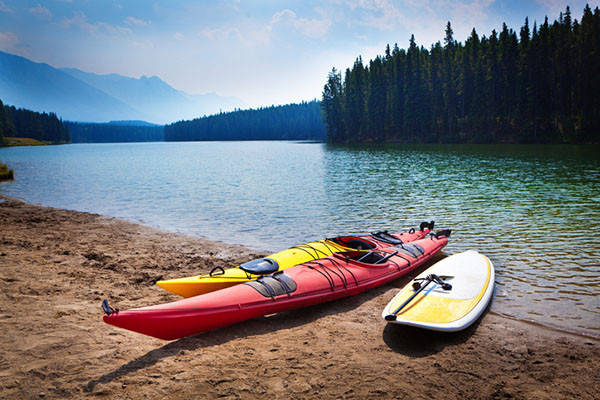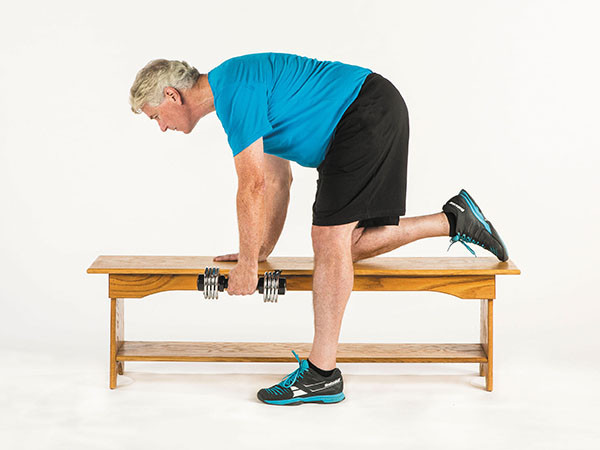
Power your paddle sports with three great exercises

For my birthday last yr, I been given paddleboard lessons. I was normally curious about the common h2o activity and watched in fascination as individuals stood on nearly-invisible boards, paddling along as if strolling on water.
Paddleboarding was every little thing I envisioned and then some. However, I promptly understood that it is a serious training, like all paddle sports activities, these kinds of as kayaking and canoeing. It may perhaps appear easy, floating alongside and casually dipping a paddle in water. But a great deal goes on beneath the area, so to talk. As warmer climate beckons and paddle year arrives, it pays to get vital muscle mass in form ahead of heading out on the drinking water.
Tuning up muscles: Focus on core, back, arms, and shoulders
“Paddling a kayak, canoe, or paddleboard depends on muscle tissue that we very likely haven’t employed a lot in the course of winter season,” states Kathleen Salas, a actual physical therapist with Spaulding Adaptive Sporting activities Centers at Harvard-affiliated Spaulding Rehabilitation Network. “Even if you regularly weight educate, the constant and repetitive motions involved in paddling involve stamina and control of unique muscles that need to have to be properly stretched and strengthened.”
Whilst paddling can be a whole-entire body hard work (even your legs add), a few spots do the most do the job and therefore want the most conditioning: the core, back again, and arms and shoulders.
- Core. Your main comprises numerous muscle mass, but the main kinds for paddling consist of the rectus abdominis (that famed “six-pack”) and the obliques, positioned on the facet and front of your abdomen. The core acts as the epicenter all over which each and every motion revolves — from twisting to bending to stabilizing your trunk to produce ability.
- Again: Paddling engages most of the back again muscle tissues, but the types that carry the most load are the latissimus dorsi muscle tissues, also acknowledged as the lats, and the erector spinae. The lats are the huge V-formed muscle groups that join your arms to your vertebral column. They assistance safeguard and stabilize your spine though giving shoulder and again toughness. The erector spinae, a group of muscle groups that operates the length of the spine on the left and proper, helps with rotation.
- Arms and shoulders: Just about every paddle stroke engages the muscle tissue in your arms (biceps) and the leading of your shoulder (deltoids).
A lot of workouts specially focus on these muscle tissues, but in this article are a few that can perform numerous paddling muscle tissues in a single shift. Incorporate them to your exercise routines to support you get ready for paddling year. If you have not performed these workout routines in advance of, check out the 1st two without weights till you can do the motion smoothly and with very good form.
3 terrific routines to prep for paddling
Wooden chop


Muscular tissues worked: Deltoids, obliques, rectus abdominis, erector spinae
Reps: 8–12 on every single aspect
Sets: 1–3
Rest: 30–90 seconds amongst sets
Commencing placement: Stand with your ft about shoulder-width apart and maintain a dumbbell with the two arms. Hinge forward at your hips and bend your knees to sit again into a slight squat. Rotate your torso to the appropriate and extend your arms to maintain the dumbbell on the outside the house of your appropriate knee.
Movement: Straighten your legs to stand up as you rotate your torso to the still left and increase the bodyweight diagonally across your overall body and up to the left, above your shoulder, whilst holding your arms prolonged. In a chopping motion, little by little deliver the dumbbell down and across your system toward the outdoors of your proper knee. This is one particular rep. End all reps, then repeat on the other aspect. This completes one set.
Ideas and procedures:
- Keep your spine neutral and your shoulders down and back again
- Attain only as significantly as is comfortable.
- Preserve your knees no farther forward than your toes when you squat.
Make it less difficult: Do the exercising without the need of a dumbbell.
Make it tougher: Use a heavier dumbbell.
Bent-around row


Muscular tissues labored: Latissimus dorsi, deltoids, biceps
Reps: 8–12
Sets: 1–3
Relaxation: 30–90 seconds between sets
Starting up posture: Stand with a bodyweight in your still left hand and a bench or sturdy chair on your ideal aspect. Put your ideal hand and knee on the bench or chair seat. Enable your still left arm dangle specifically below your remaining shoulder, totally prolonged towards the flooring. Your backbone should really be neutral, and your shoulders and hips squared.
Movement: Squeeze your shoulder blades alongside one another, then bend your elbow to slowly and gradually raise the fat toward your ribs. Return to the starting off position. Complete all reps, then repeat with the opposite arm. This completes 1 established.
Guidelines and tactics:
- Preserve your shoulders squared throughout.
- Retain your elbow shut to your facet as you elevate the pounds.
- Maintain your head in line with your spine.
Make it much easier: Use a lighter body weight.
Make it harder: Use a heavier bodyweight.
Superman


Muscular tissues labored: Deltoids, latissimus dorsi, erector spinae
Reps: 8–12
Sets: 1–3
Rest: 30–90 seconds involving sets
Starting posture: Lie face down on the floor with your arms prolonged, palms down, and legs prolonged.
Movement: Simultaneously lift your arms, head, chest, and legs off the floor as superior as is at ease. Keep. Return to the beginning situation.
Recommendations and tactics:
- Tighten your buttocks ahead of lifting.
- Never search up.
- Maintain your shoulders down, absent from your ears.
Make it simpler: Raise your correct arm and left leg whilst keeping the opposite arm and leg on the flooring. Swap sides with each individual rep.
Make it more durable: Hold in the “up” position for three to 5 seconds prior to lowering.
As a assistance to our audience, Harvard Well being Publishing delivers accessibility to our library of archived written content.
Please note the day of final assessment or update on all articles or blog posts. No information on this web site, no matter of date,
really should ever be made use of as a substitute for immediate health care assistance from your health practitioner or other competent clinician.



